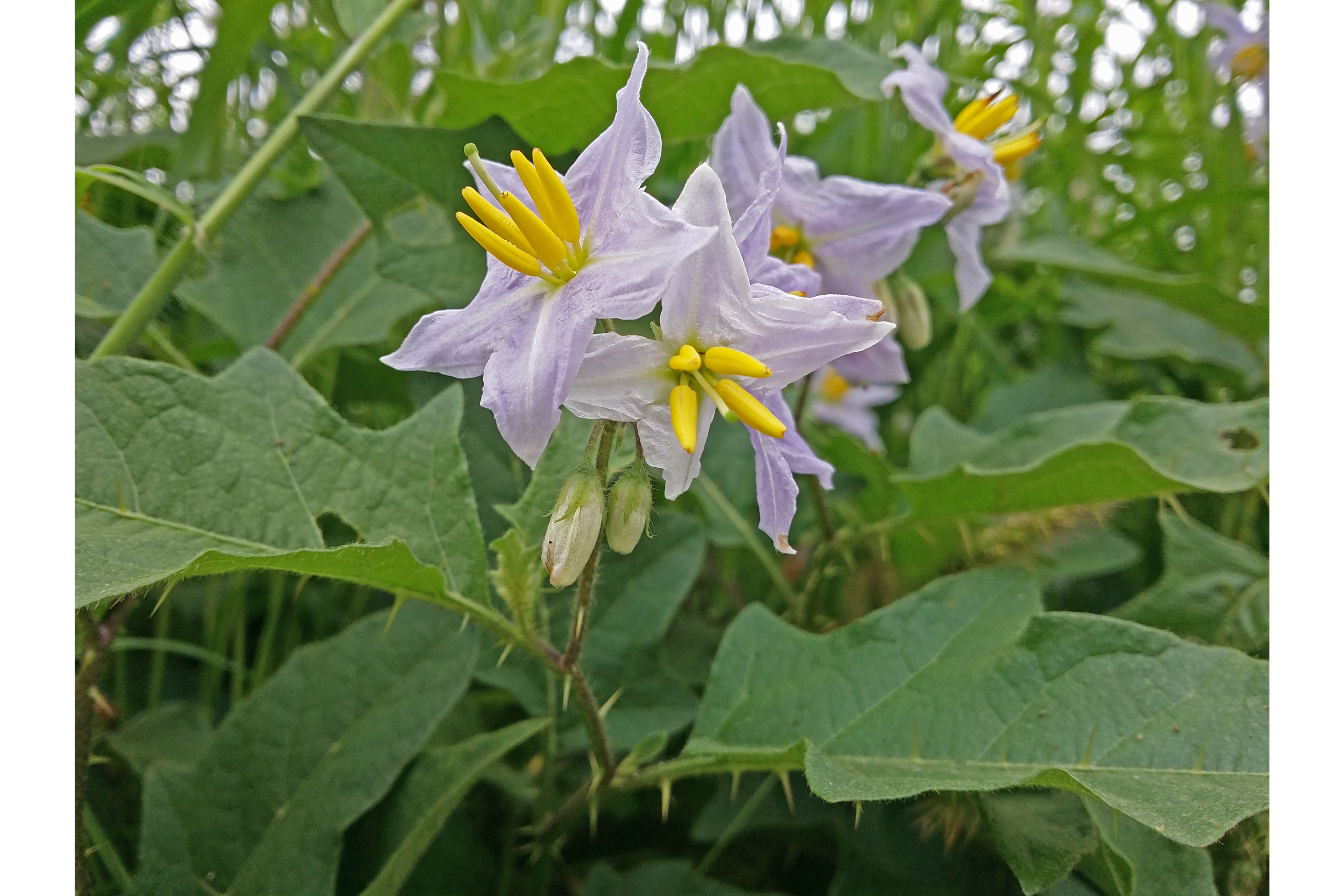Carolina horsenettle
(Solanum carolinense)

Description
Solanum carolinense, the Carolina horsenettle, is not a true nettle, but a member of the Solanaceae, or nightshade family. It is a perennial herbaceous plant, native to the southeastern United States. The plant is invasive throughout much of temperate North America, as well as parts of Europe, Asia, and Australia. The stem and undersides of larger leaf veins are covered with prickles. "Horsenettle" is also written "horse nettle" or "horse-nettle", though USDA publications usually use the one-word form. Though there are other horsenettle nightshades, S. carolinense is the species most commonly called "the horsenettle". Other common names include radical weed, sand brier or briar, bull nettle, tread-softly, Solanum mammosum ("apple of Sodom"), devil's tomato and wild tomato. Leaves are alternate, elliptic-oblong to oval, 6 to 11 centimetres (2+1⁄2 to 4+1⁄2 inches) long, and each is irregularly lobed or coarsely toothed. Both surfaces are covered with fine hairs. Leaves smell like potatoes when crushed. The flowers have five petals and are usually white or purple with yellow centers, though there is a blue variant that resembles the tomato flower. The fruits are berries that resemble tomatoes. The immature fruit is dark green with light green stripes, turning yellow and wrinkled as it matures. Each fruit contains around 60 seeds. It flowers throughout the summer, from April to October (on the northern hemisphere). The plant grows to 90 cm (3 ft) tall, is perennial, and spreads by both seeds and underground rhizome. Stems of older plants are woody. These plants can be found growing in pastures, roadsides, railroad margins, and in disturbed areas and waste ground. They grow to about 1 m (40 in) tall, but are typically shorter, existing as subshrubs. They prefer full sun, but can tolerate both wet or dry conditions. They grow readily in sandy or loamy soils, and may also tolerate a wide range of soil types. They are most vigorous and most likely to become weedy or dominate on disturbed sites, but can also be found in less disturbed habitats. All parts of the plant, including its tomato-like fruit, are poisonous to varying degrees due to the presence of solanine glycoalkaloids which is a toxic alkaloid and one of the plant's natural defenses. While ingesting any part of the plant can cause fever, headache, scratchy throat, nausea, vomiting, and diarrhea, ingesting the fruit can cause abdominal pain, circulatory and respiratory depression, or even death.
Taxonomic tree:







